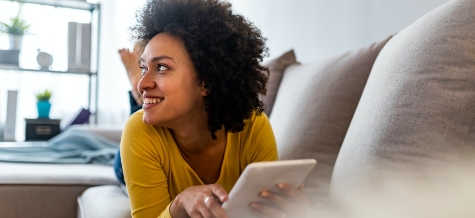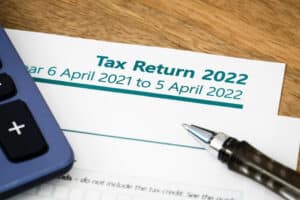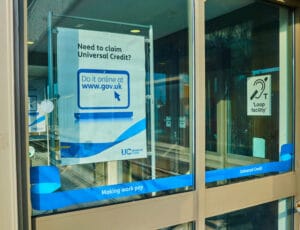A different tax code can make a huge difference to the amount of money that ends up in your pocket – but unless you’re a payroll expert, tax codes can be confusing.
In this guide, we’ll explain everything you need to know about your tax code, including:
- What a tax code is and what effect it has on your pay
- A list of the most common tax codes
- How to work out which tax code you should be on
- What to do if you think you’re on the wrong tax code
What is a tax code?
A tax code is a series of numbers and letters assigned to each taxpayer by HM Revenue and Customs (HMRC).
This code tells your employer how much income tax should be deducted from your pay before you receive it.
The numbers indicate how much tax-free income you can earn in a year. For example, the common 1250L code means you can earn £12,500 before being taxed.
The letters indicate any special circumstances like multiple jobs or pensions that require adjustment of your tax-free allowance.
Your tax code is unique to you and is there to make sure that the correct amount of tax is deducted from your wages, based on your unique circumstances.
Who receives a tax code?
Anyone in the UK who earns an income and may be required to pay tax on that income will receive a tax code from HMRC.
This means it isn’t just employees who get a tax code – self-employed people, people with multiple sources of income, and pensioners may all be paying tax, so they will have a code too.
How does a tax code work?
When you start a new job or pension, your employer or pension provider will ask you for your tax code.
They will then use this to work out how much income tax should be taken from your pay or pension.
Tax codes are issued by HMRC at the start of each tax year, on April 6th. Your tax code will reflect what HMRC believes your circumstances to be for the coming 12 months.
This includes how much HMRC expects you to earn and what they think your employment circumstances will be.
This information is usually based on either what your previous year’s income and circumstances were or any information you have given to HMRC to help them make an accurate calculation. As long as these details are correct, you will usually receive the correct tax code from the coming year.
Where can I find my tax code?
You’ll be able to find your tax code in a few different places, including:
- On your payslip – Your tax code will be displayed on your monthly or weekly payslip from your employer. It is usually shown near the top along with your National Insurance number and other personal details.
- On your P60 form – This annual tax statement provided by your employer will clearly state your tax code for that financial year. It summarises your income and deductions.
- On letters from HMRC – When HMRC issues or changes your tax code, they will send you a letter notifying you of your new code. This ‘Notice of Coding’ outlines the reason for the change.
- In your personal tax account – If you register for an online account with HMRC, your current and previous tax codes will be visible when you log in.
- On your pension statement – Your private or workplace pension provider will also issue documents showing your tax code related to pension income.
What does a tax code look like?
Your tax code is a combination of letters and numbers – usually 3-4 numbers and 1 letter.
The code begins with a number. This represents your personal allowance entitlement (your tax-free income) for the tax year.
So, if you get the most common rate of tax-free income, the tax code with start with 1257 – representing the personal allowance of £12,570.
After the number, you’ll find a letter. These are a little more complex as they explain your personal circumstances and the effect this will have on your personal allowance.
We’ve listed these below with an explanation of what the most common ones mean.
Debt Calculator
A complete list of tax codes and what they mean
Although there are many different tax codes, almost all will be included in this list:
- L: This means you’re under 65 and receiving the basic personal allowance. This is the most common tax code for tax-paying workers.
- BR, D0 and D1: A tax code BR, D0, or D1 relate to second jobs and second pensions. HMRC only counts your first job as your main job – so they apply the tax-free personal allowance to that. Since the second job is on top of this, it doesn’t qualify for a personal allowance. Don’t worry though, you’re not going to be taxed more – it works out the same as having just one job that pays the same as both your jobs combined.
- M and N: These codes indicate a marriage allowance. If it’s ‘N’ this means you’ve transferred 10% of your personal allowance onto your spouse, and ‘M’ means you’re the person this has been transferred to. It is only possible to do this if your total earnings are below £12,570 each year and your spouse isn’t in one of the higher tax brackets.
- K: A K tax code means you don’t get a personal allowance. Some examples of when this might occur include:
- You’re paying off tax owed from a previous tax year
- You’ve had a company benefit that’s worth more than your personal allowance (an example might be a company car, or company housing)
- You get taxable benefits (either from the Department for Work and Pensions – DWP – or from your company)
- Y: You’re 75 or over and over, and you receive the maximum possible personal allowance.
- S: This indicates you’re on a Scottish tax code. This will show at the start of your tax code and means Scottish income tax rates are applied to what you earn.
- NT: This means you don’t pay any tax. This is often because you’ve not reached a taxable amount of income, or sometimes because you’re self-employed and only paying national insurance but no tax.
- T and 0T: These codes apply to workers earning £100,000 or above per year. For every £2 you earn, £1 will be taken off your personal allowance. The T will have a number before it – this number shows how much personal allowance you have left after these deductions. If your earnings reach £125,140, this code will change to 0T, meaning you have no personal allowance left, and all your income is subject to tax.
- W1, M1 and X: These are known as ’emergency tax codes’. With an emergency tax code, tax is taken off your earnings above any tax-free allowance. Emergency tax codes are applied if you change jobs but HMRC doesn’t get your new income info in time to make the correct change to your code. This kind of code will usually be corrected when you or your employer sends up-to-date details.
What is the most common tax code?
The most common tax code in the UK is 1257L. This is because it reflects the standard tax-free allowance and applies to people with one job or pension.
Although HMRC doesn’t publish figures on the breakdown of tax codes, there were around 32m people currently paying income tax who paid income tax in the UK in 2022. It’s estimated that around 65-70% of workers are basic rate taxpayers – so it’s reasonable to estimate that the 1257L tax code will apply to around 20m workers in the UK.
How to work out which tax code you should be on
Unfortunately, there’s no quick way to calculate what your tax code should be. Instead, it’s useful to consider a few different factors and check in a few different places.
Check your latest payslip or P60
This provides a starting point so you can understand what your tax code is now and compare it to further information.
Think about your employment situation
Do you have more than one job or pension? This might mean an adjustment is needed.
Think about other sources of income
Do you have any savings, investments, or properties that earn you an income? If so, these things could affect your allowance.
Do you get any benefits from your job?
Certain workplace benefits are considered to be a type of income – such as company cars, health insurance, etc.
If you receive one or more of these, you might be given a different tax code.
Do you qualify for a marriage allowance?
Do you qualify for, or use, a marriage allowance? This could have an effect on your and your spouse’s tax code.
Use the HMRC income tax tool
It doesn’t account for all possible circumstances – but HMRC has a tool that allows you to estimate how much income tax you will be expected to pay for the coming year.
This will help you check that the numbers you’re working with are as close as possible to being correct.
What should you do if you think your income tax code is wrong
Tax codes can be miscalculated for a huge number of reasons. For instance, your circumstances may have changed, a company benefit may have been taken away, or you may not have claimed tax relief for expenses you were entitled to allowances for.
While an incorrect tax code may mean a rebate, it could also mean getting a tax bill if you’ve underpaid.
Either way, it’s better to get it right as quickly as possible.
So, what happens if you’ve looked at your tax code and think it could be wrong?
Think about taking the some of the following steps to check your tax code or get help correcting it:
Talk to your employer’s payroll department
Mistakes can sometimes happen when a tax code is entered into a payroll system.
Talk to them or the person responsible for paying employees and double-check that they’ve got the right code for you.
Contact HMRC
You can contact HMRC to check your tax code in a few different ways. You can use their digital assistant as part of your personal tax account. Alternatively, you can call them on 0300 200 3300 – or, if you cannot hear or speak on the phone, you can use Relay UK by dialling 18001, then 0300 200 3300. If you’re calling from outside the UK, you can use +44 135 535 9022.
HMRC telephone opening times are Monday to Friday: 8am to 6pm. They are closed on weekends and bank holidays.
HMRC may need you to provide some paperwork to confirm your circumstances – but when you do, they will usually be able to put the problem right quickly.
What to do if your tax code is corrected by HMRC or your payroll team
If you do find there’s been an error with your tax code, it’s a good idea to make sure the problem has been put right.
Follow up with your employer if a problem has been identified – it’s a good idea to let them know if HMRC has told you an error has occurred.
When you next get a payslip, make sure the tax code on there is what you’re expecting.
You may also be entitled to a tax rebate if you’ve paid more tax than was required.
They will usually let you know if this is going to be the case – but it’s a good idea to follow up with them to make sure it’s being processed.

Why choose YourDebtExpert?
- Write off unsecured debts over £5,000
- Stop interest and charges soaring
- Reduced payments from £85 per month
A list of tax codes and what they mean: A summary
They might be complicated, but tax codes are an essential part of making sure you’re being paid the correct amount.
For most people, the standard tax code of 1257L will apply – but it could be different if you have a second job or pension, other sources of income, or changes made to the personal allowance that’s been set for you.
If you think something isn’t quite right about your tax code, it’s important to take steps to get it put right as soon as possible.
If it turns out you owe HMRC money, they will usually let you pay it back by adjusting your tax code moving forward. Alternatively, if you’ve been overpaying tax, they could send you a rebate, making up for the overpaid tax taken from you.





